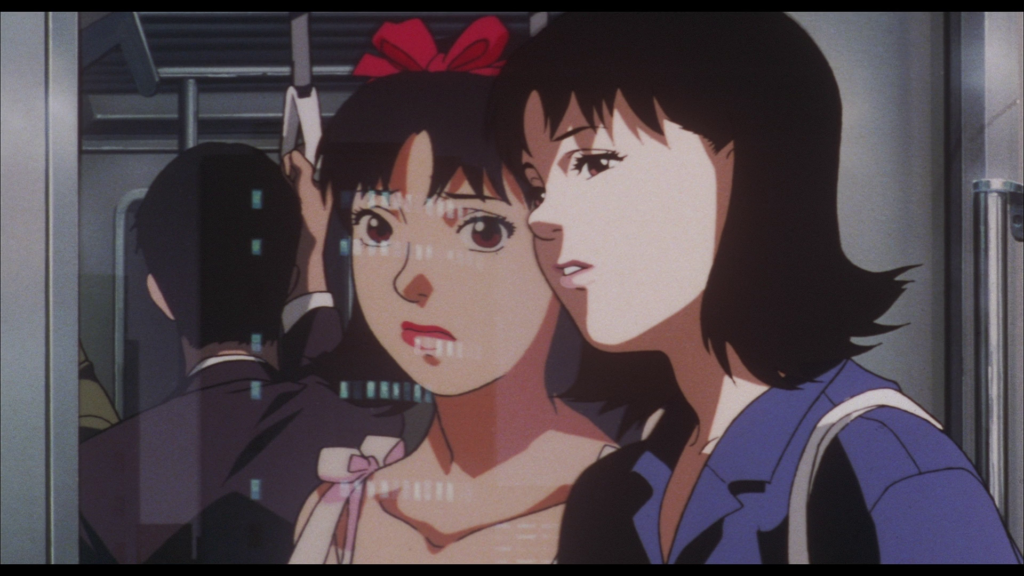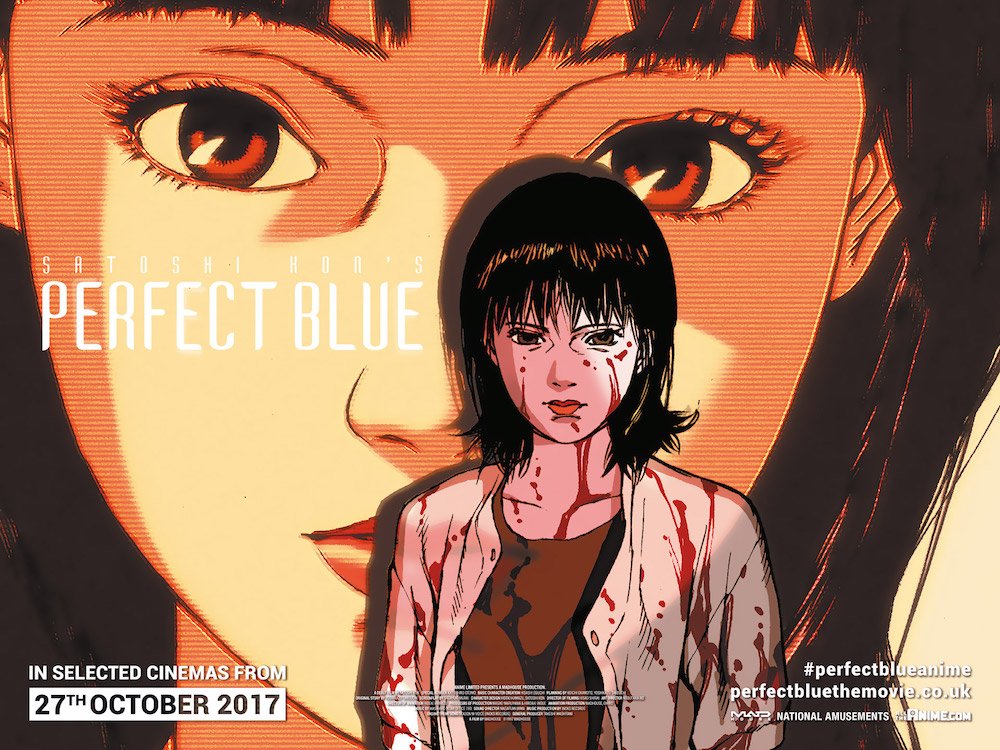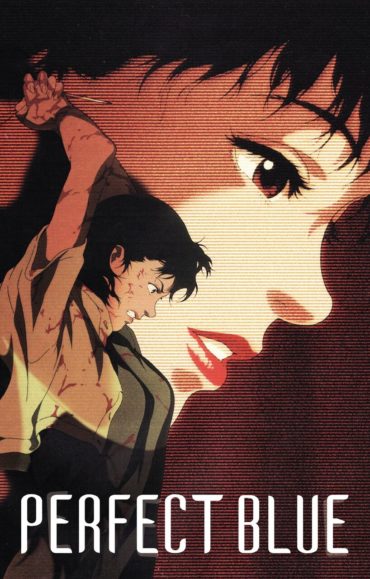Perfect Blue Review
It’s hard to believe, but it’s now been over 7 years since Satoshi Kon’s passing, and despite his filmography being small compared to many of his peers, his influence in the anime and film industry as a whole is still prevalent to this day. From his impact on Western cinema (notably Darren Aronofsky) to continuous re-releases for his films (Paprika’s getting a fresh UK Blu-ray release this year for example) to Masao Maruyama promising to finish Kon’s last film Dreaming Machine that he was working on before his death for ‘however long it takes’. Kon’s unique directing style, his love for blending fantasy and reality, plus his uncompromising look at harsh themes from homelessness to the male gaze to Japanese modern society, made him a raw talent that was taken from us too soon, but leaves a legacy that will not be forgotten. The 20th anniversary cinema re-release of his movie director debut, Perfect Blue, in time for Halloween is proof of his work not only solidifying its reputation as an anime classic but a wonderful addition to the long line of anime films that the UK has been blessed with this year alone. But despite the talent and reputation Perfect Blue has, does it still hold up after two decades?

Perfect Blue is set in Japan in the late 90s where Mima Kirigoe has just announced that she will be leaving her Pop Idol days and band mates of CHAM behind, in order to pursue an acting career. Despite the audience seemingly not wanting her to change her image, and even her female manager Rumi’s objections, Mima smiles and assures everyone she’s willing to try any role thrown her way, no matter how risqué it may be. But with violent crimes happening around her that scarily mirror the drama show she’s working on, and finding a website that records her daily life in hauntingly accurate ways, the life she once knew slowly unravels as she begins to wonder who exactly is the ‘real Mima’.
Despite the age of the film, and some of the technology looking very dated by today’s standards (no one says the ‘world wide web’ anymore for example) it’s fascinating but also chilling how much of the themes and plot points in Perfect Blue are still relevant today. Bear in mind that when this film came out back in 1997, the internet was not as commercially available as it is now and the prospect of fan-run sites that follow celebrities to the nth degree is the norm these days but not as much back then. Yet Perfect Blue not only manages to accurately predict the ‘world wide web’ in the future for said use but also the crippling terror that comes from it, with Mima horrified at how these sites not only follow her around but manage somehow to get inside her head and question what’s really happening in her daily life. Then there’s the ‘entitlement’ that comes from celebrity-obsessed fans; Idol culture is exclusive to Japan but the acts of certain types of admirers thinking they ‘own’ the celebrities they claim to love, lashing out when said star doesn’t behave how they imagine and the extreme aspects of stalking, that sadly DOES happen in Western culture. There are many scenes in this film where people are seen talking ABOUT Mima, sometimes even when she’s in the room as if she’s not there, and we’re made aware of their opinions on her and her actions before we even hear from the lead herself. She’s objectified in her own movie, but it’s done intentionally to prove a point; as her psyche starts to unravel and the person known as ‘Mima’ becomes more and more of a question mark because SHE doesn’t know who she is anymore. Is she a Pop Idol? Is she an actress? Is she hallucinating or is it just part of the role she’s made to play? Is she a woman willing to strip naked for the camera because that’s who she is or is it who she’s been pushed into being? The often discussed ‘madonna-whore’ complex and the objectification of female celebrities, which is also still prevalent in modern society, is a topic brought up by this movie and even in repeated viewings it’s a harsh and uncomfortable watch, as it should be, since we’re experiencing the trauma directly via Mima. Despite the fourth wall, we are as exposed and vulnerable as she is, which serves to great impact for the psychological horror movie experience as well as a discussion to have once the credits roll.
Satoshi Kon was known to be a big fan of blending fantasy and reality, often bouncing back and forth between the two to keep the audience constantly second-guessing what scenes are merely scenes that Mima’s filming, and what is part of her psyche deteriorating – sometimes it plays both, especially in one scene where we see it twice with very minor dialogue changes: the first time seemingly played as the moment where she finally breaks and the next it’s all just an act for the camera. Even in repeated watches it’s a fun game trying to figure out which scenes are real or not, and it’s Satoshi Kon’s directing that effortlessly blends the shades of reality together in continuously surprising ways that makes you, the audience, experience Mima’s mind falling apart in a way that feels organic to the horror experience rather than a cheap trick that the director plays on you. If the audience can’t tell the difference between fantasy and reality, then how the hell can Mima?

For every psychological horror however, there is (almost) always a twist, and unfortunately for Perfect Blue this doesn’t hold up as well on sequential viewings. Whilst it’s a genuinely unexpected turn of events for the first watch, and works well with the theme and tone of the film, it lacks any sort of build-up or foreshadowing to it, unless huge leaps of logic are incorporated into the movie and character involved. You could argue that the audience doesn’t see it coming, because Mima’s mind is too preoccupied with her own psychosis to see it coming, but even when we do get the few scenes where we are pulled away from Mima’s point of view and chances to see from another, it fails to really sow the seeds of its own twist. This may have been as a result of Perfect Blue being the only film that Satoshi Kon directed but did not come up with the original concept for, as it’s an adaption of a novel (which is finally getting a western release in 2018 – so we’ll find out then for sure). Another point against Perfect Blue is the final scene which hastily wraps up the psychological meltdown of the climatic showdown and proceed to give us a falsely earned happy ending. In the Japanese version it’s not as bad, since a certain wham line is read in a way to mind-screw the audience; in the English dub, however, the delivery is played straight, and with an out-of-place upbeat pop-track to play over the credits, feels more like a whiplash than an effective conclusion for the thriller ride.
Speaking of the soundtrack, despite the off-putting pop track to close the film, the rest of Masahiro Ikumi’s score is fittingly chilling. Ranging from harsh techno to sombre piano to the sickly-sweet J-pop the band CHAM performs, Ikumi portrays a wide range of talent that creates a chilling atmosphere for Perfect Blue. The use of minimal instrumentation is, for lack of a better word, perfect for the ride that keeps the audience on their toes throughout, especially early on when it manages to make mundane actions such as taking a train journey or browsing the internet feel as if something terrible is about to occur. It’s a shame Masahiro Ikumi has yet to do anything else since this movie.
Perfect Blue is a classic and one of Satoshi Kon’s most memorable films for a reason; it’s an effective psychological thriller that brilliantly plays with expectations and directly addresses uncomfortable, heavy themes for a mind-trip of a movie. Whilst the ending may not as stellar as the work leading up to it, this is definitely a film that any anime fan should treat themselves to this Halloween.
Perfect Blue is in selected UK cinemas from 27th October 2017 from Anime Limited; purchase your tickets here.
Also out on DVD and Blu-ray from Anime Limited, available on Amazon.co.uk.



